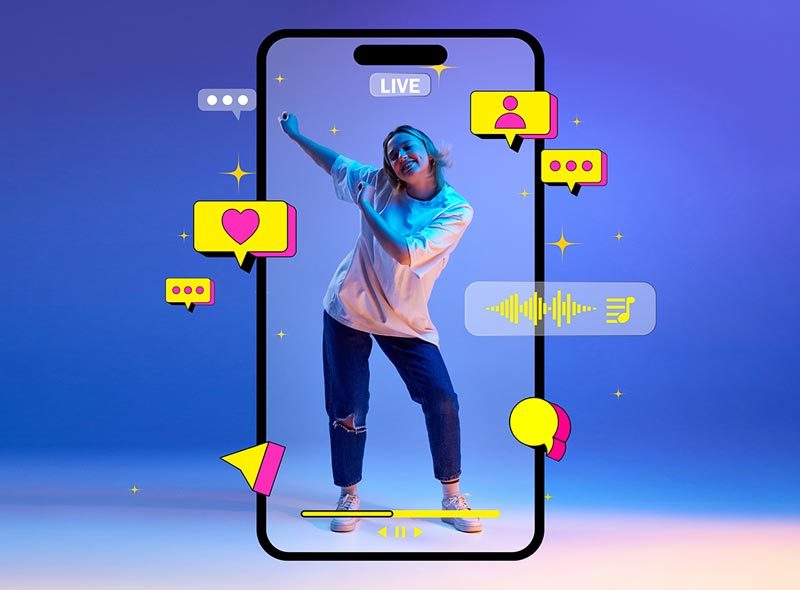In addition to navigating these troubled waters, platforms are becoming more data-shackled, as governments are raising their brows when it comes to how and what user information is being aggregated. As a result, platforms are updating rules and regulations across the board.
Strategists are now forced to consider new approaches while continuing to develop salient plans without the luxury of obtaining the same type of data to help inform those strategies. If that’s not enough, channel demographics are shifting like never before. Content consumption has increased exponentially, and the ways people use platforms have shifted.
While volatility is at an all-time-high, there have been positive developments like the removal of Facebook’s 20% text rule (yes, creatives can now rejoice), emergent platforms are coming out of the woodwork, and the undeniable and overwhelming desire for social media is universal.
Considering the climate, we highlighted the top trends that we’re bound to see and also leverage as we head into 2021 and beyond:
- Video and live streaming
Many brands are seeing that video continues to reign supreme in terms of engagement. With short attention spans, especially among younger demographics, it is no surprise that video outperforms most content-types. According to Cisco, 82% of all online content will be video content. In addition, live video will also continue to grow across brand pages into 2022.
In 2019 alone, internet users watched 1.1 billion hours of live video. And while this figure was already sure to explode, the global crisis has only added more fuel to the fire, with live video becoming the prime method to communicate for many industries.
- Ephemeral content
Short-term formats like “stories” aren’t going anywhere. In fact, these formats are not only available on Instagram, Facebook and WhatsApp, similar features have been sprouting up on other platforms like YouTube, LinkedIn and Twitter, with others in the pipeline. According to Hootsuite, 64% of marketers either have already incorporated Instagram Stories into their strategies or plan to.
It’s evident that users enjoy the idea of not feeling tied to content in perpetuity, particularly in-feed content, and posts that have a shorter shelf-life are more compelling since they’re fleeting. The beauty of it all is if content is worth keeping, it can be saved or pinned, where available.
- Virtual Events
Although this method became a necessity in 2020, virtual events will continue to be more accessible and frequent to communicators and users alike. For example, LinkedIn now enables free lead capture for events on the platform. You can either host an event on LinkedIn Live or point individuals to another virtual event platform. In addition, virtual events will provide fertile ground for more opportunities in advertising and beyond.
- Influencer Marketing
Influencers aren’t going anywhere. If anything, they have evolved with the times. Brands realize that it’s more cost-effective to utilize micro and nano influencers and still receive high return on investment. Although most influencers are found and used on social, brands are now leveraging content generated by influencers on websites, online stores, newsletters and other channels.
- Social Commerce
With almost half the world’s population now using social media, it’s expected that the next step would focus on online shopping. According to Envato, 71% of consumers turn to social media for shopping inspiration, with 55% of online shoppers now making the majority of their purchases through social media channels.
With research showing that customers are more likely to buy when presented with a streamlined shopping experience, social media platforms will continue to develop more e-commerce tools to promote social selling.
- Branded Content
While user-generated content is still considered a valuable tactic, high-quality branded content is predicted to soar in 2021. Although most branded content would typically be created for promotions, it’s now more significant to create a unique experience for consumers.
With the quality and quantity of marketing content on the rise, strategists are exploring how to gamify online experiences to keep users engaged.
- Personalized Marketing
Customers will continue to demand more from brands, favoring companies that offer better experiences at multiple touchpoints. For example, online and SMS messaging between customers and brands will grow.
Businesses and marketers are leveraging this trend in the delivery of social media ads as platforms now offer advanced targeting and customization options. This method has reached such new heights that, now, platforms are able to understand the type of products a person likes. With that data, they can serve ads for similar products from various brands.
- Authenticity and Accountability
Authenticity and accountability are two buzzwords marketers have been leaning on heavily in 2020.Now, consumers expect more from brands. They want openness, inclusivity and honesty. They want their brands to take a stand, and they invest in companies that mirror their values. Eighty-six percent of consumers say authenticity is important when deciding the brands they like and support.
All in all, it’s more noteworthy to tell consumers an honest story instead of advertising to them, which creates more trust and appreciation for their company.
Moral of the Story
It’s clear that social media will continue to be unpredictable. More individuals realize the impact social media brings to the table, and platforms are responding to that in a big way.
Platforms will continue to update and attempt to squash the competition. Platforms must be nimble to keep up with users, so marketers will always need to be ahead of the game and be ready to roll.
The Latest
We study the game as hard as we play it.
Learn with us what’s now and next.


